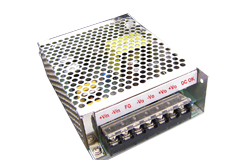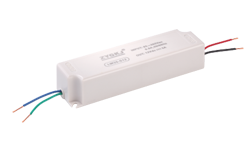nyheder
Design and Analysis of a Bidirectional DC-DC Converter for Power Electronics Applications
Author: ZYG Power Module Time: 2023-6-19
Introduction:
Power electronics has become an integral part of many electrical systems. It is used to manage power, convert power from one form to another, and distribute power. One of the most commonly used power electronics devices is the DC-DC converter. A DC-DC converter is an electronic circuit that converts a DC voltage level from one level to another. In this paper, we will discuss the design and analysis of a bidirectional DC-DC converter that can be used in power electronics applications.
Design:
The bidirectional DC-DC converter consists of two parts: a buck converter and a boost converter. The buck converter is used to step down the input voltage, and the boost converter is used to step up the output voltage. The input voltage can be either positive or negative, and the output voltage can also be either positive or negative.
To design the bidirectional DC-DC converter, the first step is to determine the specifications of the converter. The input voltage range should be between -30V to +30V, and the output voltage range should be between -15V to +15V. The output current should be 2A, and the switching frequency should be 20kHz.
The next step is to select the components for the converter. The components used in the buck converter are an inductor, a MOSFET, a diode, and a capacitor. The components used in the boost converter are an inductor, a MOSFET, a diode, and a capacitor. The inductors and capacitors are selected based on the current and voltage requirements. The MOSFETs and diodes are selected based on their current and voltage ratings.
The third step is to calculate the values of the components. The inductor values are calculated using the following formula:
L = (Vin – Vout) x Ton / (Vout x Iout x fs)
where L is the inductance, Vin is the input voltage, Vout is the output voltage, Ton is the on-time of the MOSFET, Iout is the output current, and fs is the switching frequency.
The capacitor values are calculated using the following formula:
C = Iout x Ton / (ΔV x fs x Vout)
where C is the capacitance, Iout is the output current, Ton is the on-time of the MOSFET, ΔV is the ripple voltage, fs is the switching frequency, and Vout is the output voltage.
The fourth step is to simulate the circuit using a simulation tool such as LTspice. The simulation is used to verify the circuit design and to optimize the component values. The simulation results are used to modify the component values if necessary.

Analysis:
The bidirectional DC-DC converter is analyzed based on its efficiency, voltage regulation, and transient response. The efficiency of the converter is calculated using the following formula:
Efficiency = Pout / Pin
where Pout is the output power and Pin is the input power.
The voltage regulation of the converter is analyzed by measuring the output voltage under different load conditions. The voltage should remain within the specified range under all load conditions.
The transient response of the converter is analyzed by measuring the output voltage under sudden changes in load or input voltage. The output voltage should respond quickly to changes in load or input voltage.
Conclusion:
The bidirectional DC-DC converter is a useful device for power electronics applications. It can be used to step up or step down the voltage and can be used in both positive and negative voltage applications. The design and analysis of the converter require careful consideration of the component values and the simulation results. The efficiency, voltage regulation, and transient response of the converter are key factors in its performance. The bidirectional DC-DC converter can be used in various applications such as battery charging, renewable energy systems, and electric vehicles.
Tidligere: Medical Power Series: Empowering Healthcare Professionals with Knowledge and Skills
Næste: SM Series AC DC Power Supply
relevant information
-
2023-6-11
SP Series AC DC Converter: High Performance and Reliability
The SP Series AC DC Converter is a highly reliable and high-performance power conversion solution that is used in a wide range of applications. Designed to meet the demanding requirements of modern electronic systems, this converter provides exceptional performance, efficiency, and reliability. The SP Series AC DC Converter is able to convert alternating current (AC) power into direct current (DC) power. This is accomplished through the use of high-frequency switching technology and advanced power management algorithms. The end result is a clean and stable output voltage that is free from noise and other electrical disturbances. One of the key benefits of the SP Series AC DC Converter is its high efficiency. This converter is designed to operate with minimal energy...
Se detaljer -
2023-5-27
Converting 110V AC to 12V DC: A Comprehensive Guide
Converting 110V AC to 12V DC is a common requirement in many applications, such as in automotive and marine environments, as well as in lighting and electronic devices. The process involves using a device known as a power supply or converter, which is designed to transform the high-voltage alternating current (AC) from the mains electricity supply into low-voltage direct current (DC) that can be used by electronic devices. This comprehensive guide will explain the process of converting 110V AC to 12V DC in detail. Understanding AC and DC Before discussing how to convert 110V AC to 12V DC, it is important to understand the difference between AC and DC. AC is the type of electrical current that is supplied to...
Se detaljer -
2022-8-15
Hvis du vil designe et strømmodul, hvilke aspekter skal du så overveje?
Hvis du er en skiftende strømforsyningstekniker, behøver du ikke læse introduktionen til strømmodulet. Når du stadig er nybegynder eller lærer mikrocontrollerdesign, er det bedst at se ned ord for ord. Fordelene ved at vælge et strømmodul På nuværende tidspunkt har forskellige distributører frigivet en række forskellige strømmoduler på salgsmarkedet, men arbejdsspændingen, effekt, funktion og topologi for forskellige produkter er ikke ens. At vælge et strømmodul sparer tid til udviklingsdesign og muliggør en hurtig time-to-market, så et strømmodul foretrækkes frem for en integreret løsning. 1. Hvert kontrolmodul kan testes grundigt i forskellige aspekter for at sikre, at dets billedformat er pålideligt,...
Se detaljer -
2023-5-22
Efficient AC-DC Power Supply for Reliable and Consistent Performance
Introduction: An efficient AC-DC power supply is an essential component of any electronic device. It is responsible for converting the incoming AC voltage into a DC voltage that can be used by the device. The power supply must be reliable and consistent, providing a stable output voltage even under varying load conditions. In this article, we will explore the importance of an efficient AC-DC power supply and the factors that contribute to its reliability and consistent performance. Importance of an efficient AC-DC power supply: An efficient AC-DC power supply is crucial for the proper functioning of electronic devices. It ensures that the device receives a stable and regulated DC voltage, which is essential for its safe and reliable operation. Without...
Se detaljer -
2023-4-15
Generating Direct Current: The AC-DC Converter
Direct current (DC) is a type of electrical current that flows in only one direction. It is widely used in electronics, power supplies, and many other applications. However, most of our electrical power grid is alternating current (AC), which means that the electrical current periodically changes direction. Therefore, to use AC power in DC devices, we need an AC-DC converter to convert the AC power into DC power. In this article, we will discuss how an AC-DC converter works. Firstly, let understand the difference between AC and DC power. AC power alternates between positive and negative voltage cycles, and it flows in a sine wave pattern. On the other hand, DC power flows in a straight line, and it has...
Se detaljer -
2023-6-14
Bidirectional DC-DC Converter: A Comprehensive Guide
A bidirectional DC-DC converter is a device that allows for power to be transferred between two DC power sources, such as a battery and a power grid, in either direction. This type of converter has become increasingly popular in recent years, particularly in the automotive and renewable energy industries. One of the main advantages of a bidirectional DC-DC converter is its ability to improve the efficiency of energy storage systems. These systems typically require a DC-DC converter to manage the flow of energy between the storage battery and the load, such as an electric vehicle or a home energy system. In a bidirectional converter, the same device can be used to charge or discharge the battery, depending on the needs...
Se detaljer


















